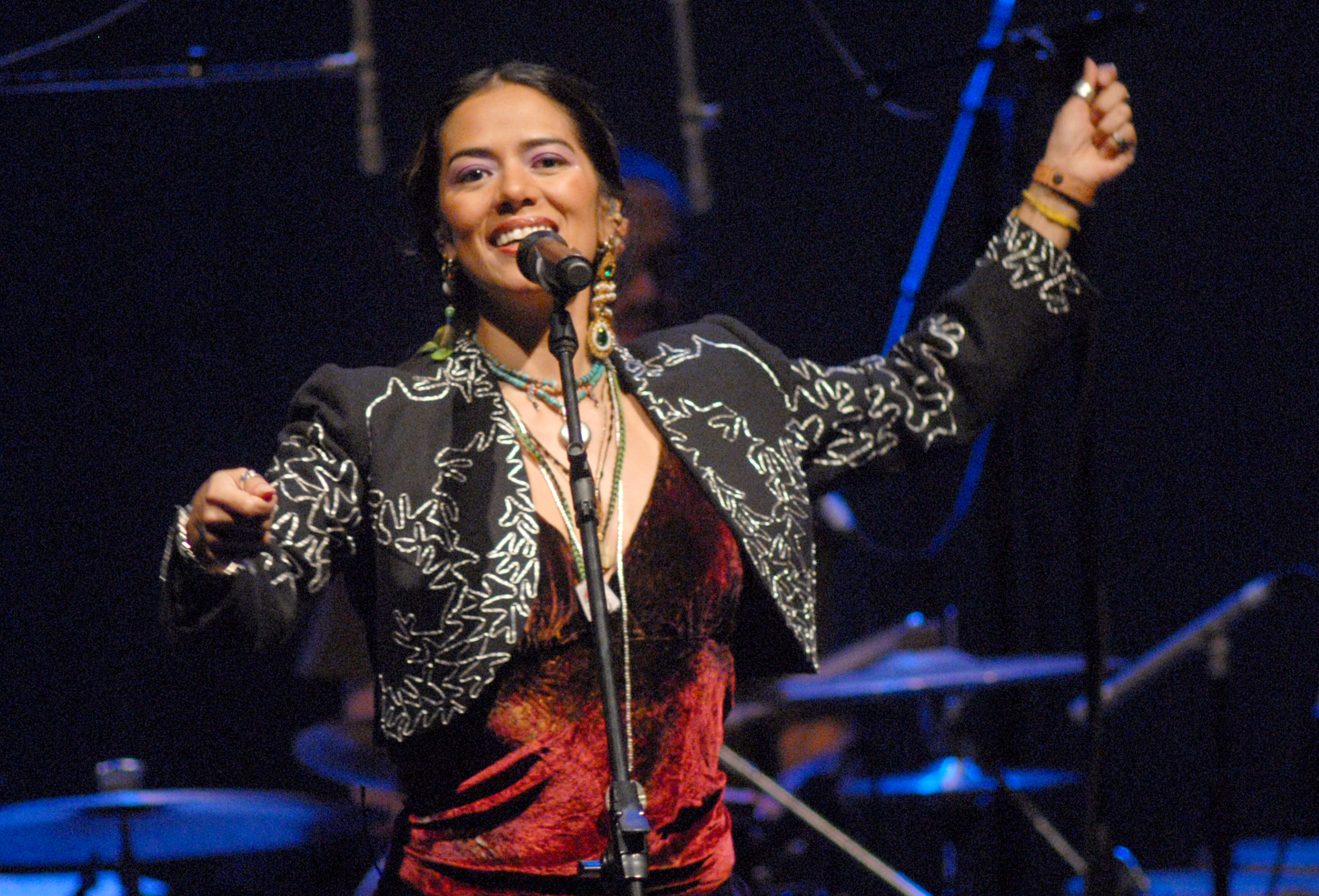Lila Downs Presents ‘Calavera’
Singer Celebrates Día de los Muertos at the Bowl

You’ve seen them everywhere from the moment you entered the culture of Southern California — calaveras, those happy skulls that unite the folks on the patio with the punks in the street. A central signifier of the international holiday Día de los Muertos, calaveras provide the point of departure for the Santa Barbara Bowl’s October 26 concert event featuring Lila Downs.
A continuation of the Bowl’s annual tradition of supporting Día de los Muertos, the show, which takes place on what is sure to be a festive Saturday night, will feature not only a complete concert by Downs, one of the most popular singers in Mexican history, but also the Grandeza Mexicana Folk Ballet Company and the Mariachi Femenil Flores Mexicanas. Billed as a “celebration of music, dance, and ritual,” the event will fill the Bowl with ofrendas where people may place calaveras as offerings. People are encouraged to wear spectacular costumes and be made up to look like stylized skeletons.
For Downs, this rich tapestry of music and ritual combines two key aspects of her career and her personality, as she is at once a great artist and an anthropological activist, someone who engages her audiences on multiple levels and whose artistic aim is to induce pleasures that are rooted in cultural solidarity. It’s why her songs focus on food so frequently, as on her most recent release, 2019’s Al Chile. The album, which was produced by Camilo Lara, stretches to encompass the whole range of contemporary music, from cumbias and rancheras to jazz, folk, and even hip-hop. On it, Downs duets with Norah Jones for the Gillian Welch/David Rawlings ballad “Dear Someone” and with Chilean singer Gepe on “Sé Feliz.” There’s also a funky cover of Manu Chao’s “Clandestino” and plenty of other spicy hotness to add flavor to the heavenly core of Downs’s unforgettable voice.
I spoke with Downs by phone last week as she was preparing for the Los Angeles leg of the tour. She is always a refreshing interview and loves to share her deep insight into the creative conflicts that define our hybrid California culture.
You will be playing on the Saturday before the actual holiday, but this still counts as a Día de los Muertos event, right? In Mexico, we start preparing for Día de los Muertos at least two weeks before the actual day, so this show falls well within the festive period. We go crazy for this whole time, especially the mothers who make the ofrendas.
There’s more to the phrase “al chile” than just the idea of something spicy. What else does it mean, and why did you choose it for the title of your new album? I took the expression “al chile,” which means “honestly” or “in truth” because it comes from folks who are rich in politics, and rich in everything, and because it also conjures up the world of food, all the different varieties of chile. You can savor food; you don’t have to explain it. In the Mexican state of Guerrero, there’s a music scene made up of groups they call “bandas de chile frito,” and a dance tradition that goes along with it. The whole chile thing is also very male, having to do with the heat and whether you can take it. It’s food as a test of machismo.
When I saw the credits on the new record, at first I thought it must be a mistake. How many people play on it? It looks to be hundreds. It is hundreds! To make the record, we invited lots of these classic groups to play with us. There are over 200 musicians on the album. Think of the payroll! The group we are taking on the road is the one I have had for a long time, the misteriosos, but in addition, we have a dance group and an all-female mariachi.
As both a cultural ambassador and a person who thinks deeply about politics and race, what do you make of the split between those who understand immigration as something ethical that families do together and those who insist on breaking families apart and looking only at people as individuals? We have focused so much on individuality that we have forgotten how to come together as family in this culture. That part of people’s lives is not being fulfilled, and it’s one of the reasons for drug addiction and suicide: that people lack support. We wrote a song for the last album called “Envidia” about this idea. I labeled the fear of immigrants “envy,” because I believe that where it is coming from is often the fact that something is being lost in a lot of Anglo families. Too much emphasis on the individual is causing them to lose the intangible things that allow people to feel like they belong somewhere.
How does that thought relate to what will happen at the Santa Barbara Bowl on Saturday? Día de los Muertos is the perfect way to address this crisis because it’s about sharing and answering the feelings of family across the boundary between life and death. Through celebrating it, we can feel the center of our community as present and real in our lives.
4•1•1 | Lila Downs presents Calavera Saturday, October 26, 7 p.m., at the Santa Barbara Bowl (1122 N. Milpas St.). See sbbowl.com or call 962-7411.



